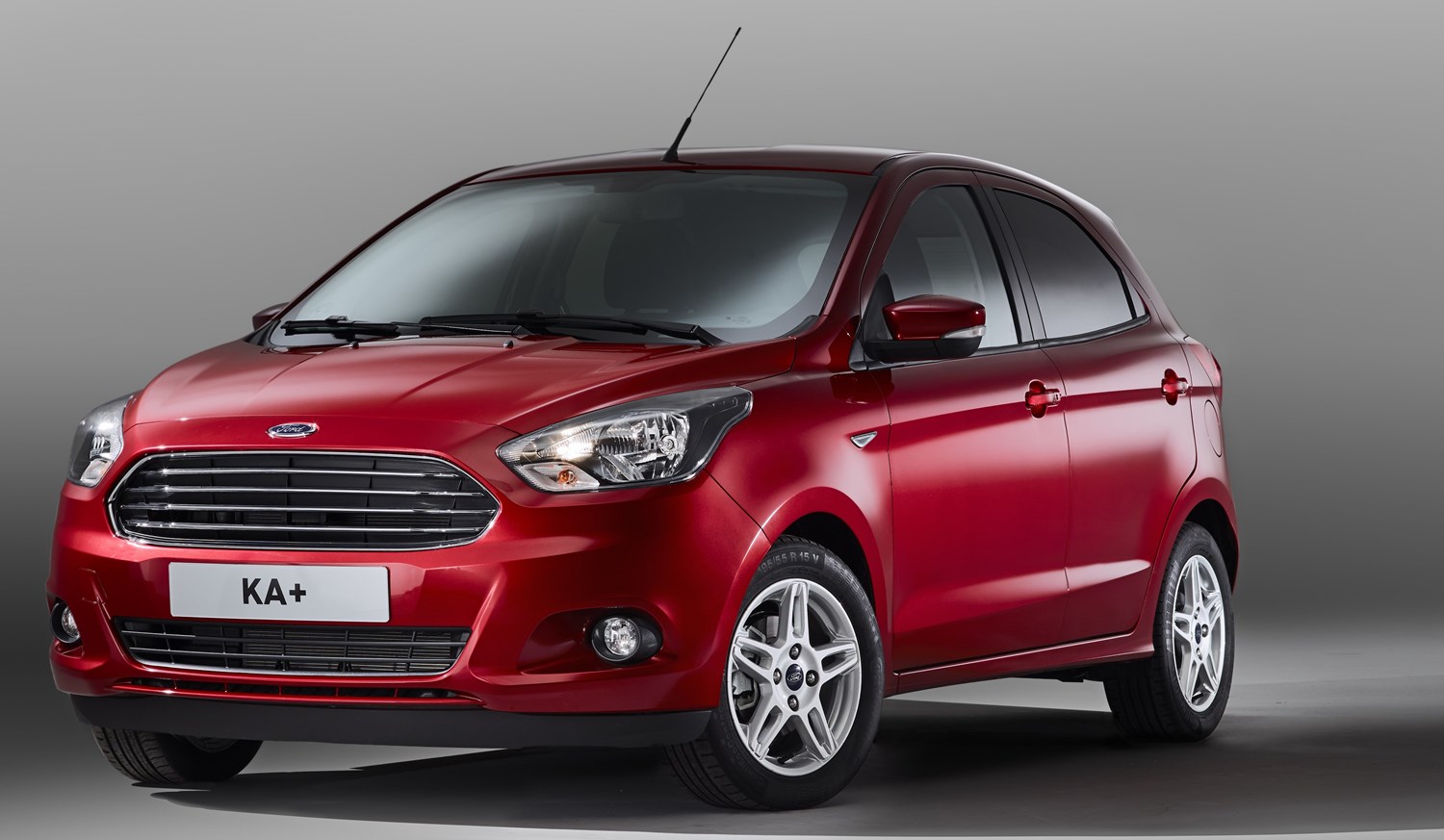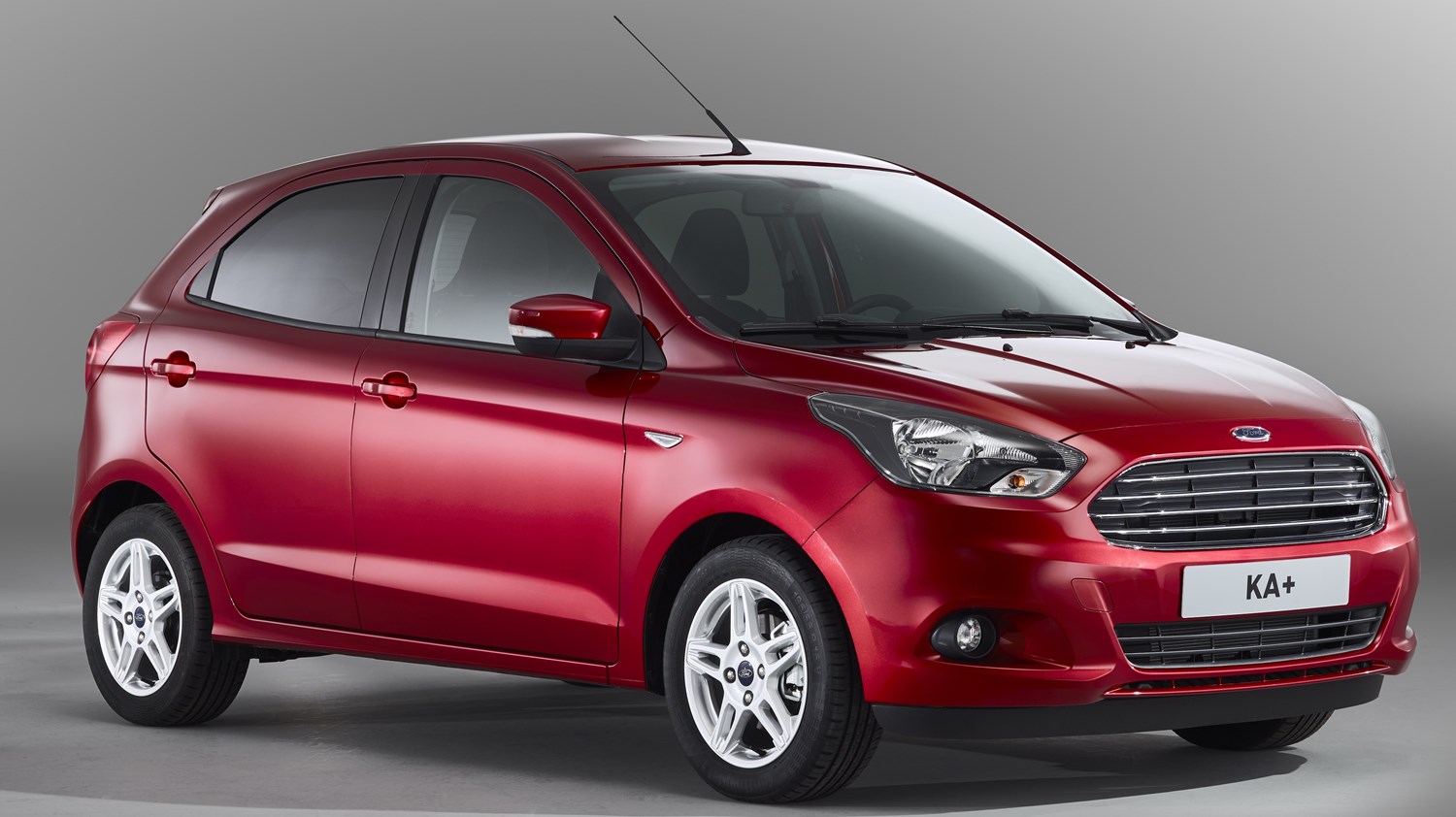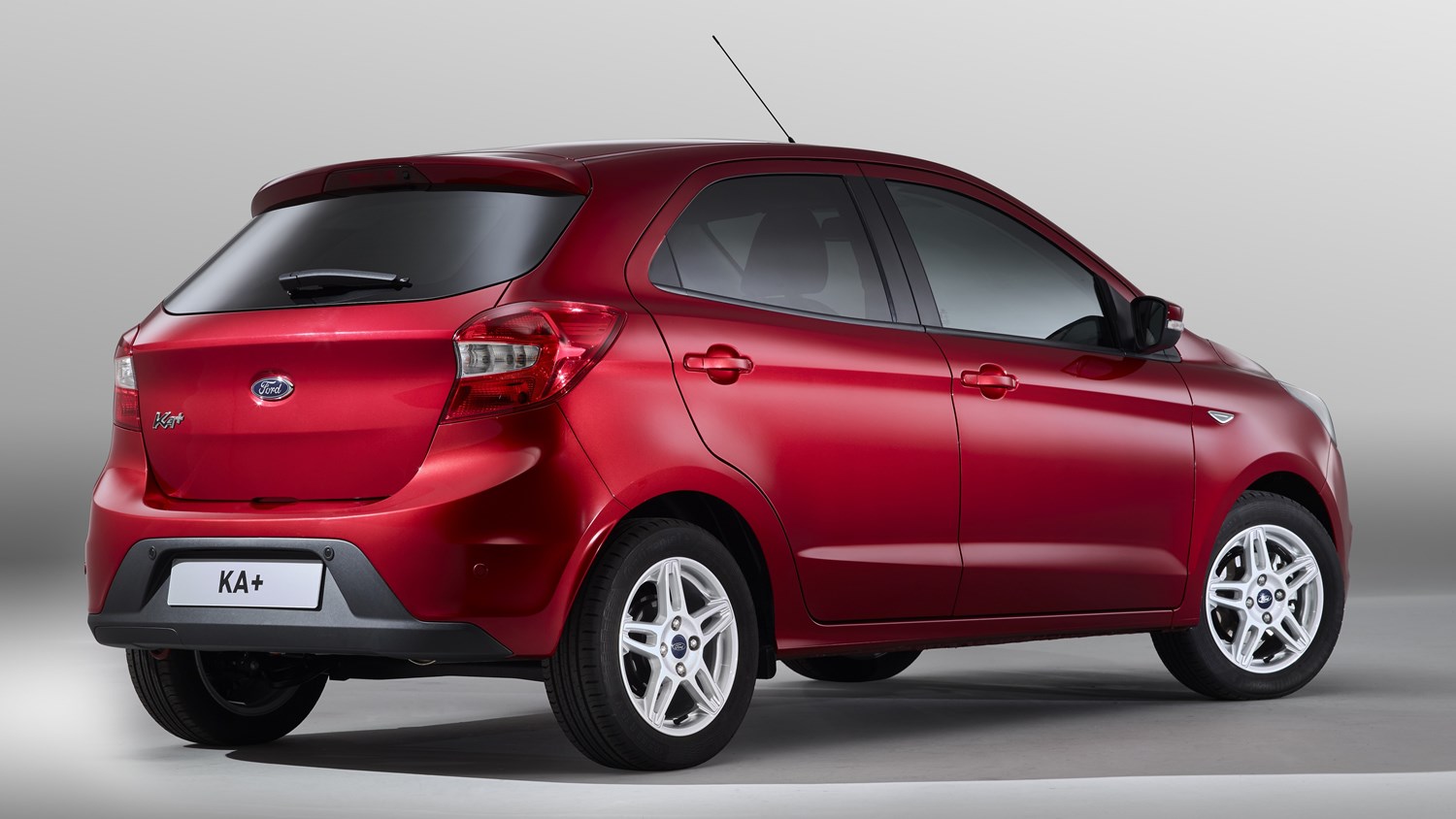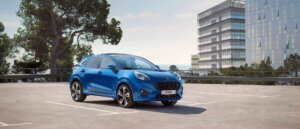Latest Model
The Ka+ adds a different dimension to the Ka moniker, as it takes it from being an outright supermini that lacked space to a sub-compact with five-doors that also takes away the need for some of the Fiesta’s lower trim options.
Even as the smallest model in the Ford range, the Ka+ has a boot space only 20 litres smaller than the Fiesta and can take on its rivals for practicality and space head-on.
The front design matches the rest of the Ford range with the large grille but the rest of the car is one of the least stylish in the brand’s current line-up, which is a let-down after the trendier second generation.
Aimed towards urban and sub-urban drivers, it is clearly designed to be more practical than stylish, which to be fair to Ford it does do quite well indeed when compared to other city cars.
Value for money
As standard, the base spec Ka+ Studio comes with 15-inch steel wheels, AM/FM radio, Bluetooth and USB connectivity, AUX port, electric front windows, hill start assist and the MyFord Dock – which allows you to charge and use your phone as a hands-free media system and satellite navigation system.
This is a fair amount of kit for a city car and does reasonably well when compared to other sub-compacts. Priced at £9,545, it is competitively priced, but as the model’s release was so recent, you will find it almost impossible to find one in a higher spec at a cheaper price.
The second generation Ka didn’t have many high-tech features, but if you’re looking for a cheap and cheerful run-around that is fun to drive and is easy to nip about in then there aren’t many that do the job as well as the second-gen Ka. One version that is not well known but certainly looks the part is the Grand Prix III, which adds a spoiler, black alloys and rear privacy glass, giving it a meaner look and feel.
Although the equipment may be very similar, it looks much better than the Ka+ and will be more fun to own. One example is available for £7,590, has only 6,000 miles on the odometer and comes in excellent condition.
Looks and image
Unfortunately for Ford, the Ka+ won’t be winning design awards any time soon as it is one of the blandest and least impressive looking vehicles currently on sale. It’s difficult to see how they could go from the stylish second generation model to a car that looks so dull, but it is clear that Ford has aimed for practicality rather than aesthetics. It is of course longer than the former Ka and is now much closer to the Fiesta in size and function.
The boring body does, however, cover a very capable chassis and fun driving setup that will give keen drivers something to dig their teeth into. As with most Fords nowadays it handles and rides superbly, with the light but direct steering giving you confidence through the corners and the well-balanced suspension setup giving comfort and control in equal amounts. Although the car does suffer from some body roll when cornering, the dampers soften the process so that it is less noticeable than you would think. This excellent ride does reveal quite a major flaw with the Ka+ and its under-powered engines.
Although the car does suffer from some body roll when cornering, the dampers soften the process so that it is less noticeable than you would think. This excellent ride does reveal quite a major flaw with the Ka+ and its under-powered engines. Both petrol engines let down the excellent driving feel, as they have to work really hard to get you anywhere.
One thing you can’t expect from the Ka+ though is luxury and in either trim level the interior feel is unrefined and scratchy plastics dominate the dashboard and central console.
The ride and seating comfort, however, is very good considering the price of the car and the cabin space allows taller passengers to travel without a little discomfort. The suspension soaks up plenty of the road’s bumps and it works well in most environments, with motorways not out of its comfort zone.





